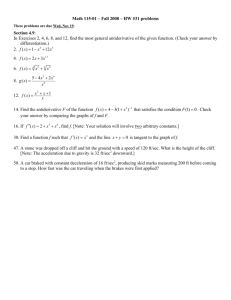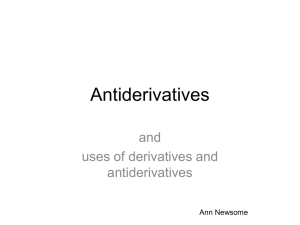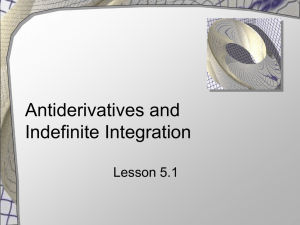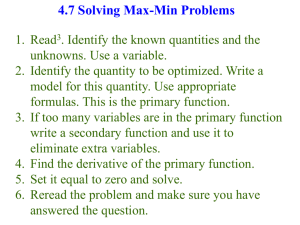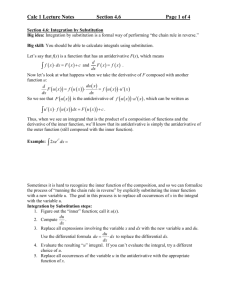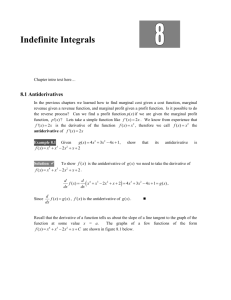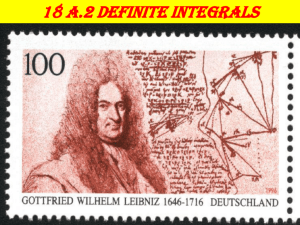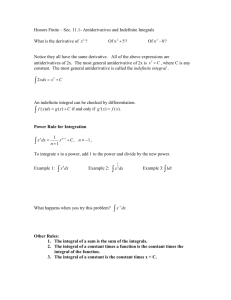272 Chapter 4: Applications of Derivatives The function F(x) = x2 is
advertisement
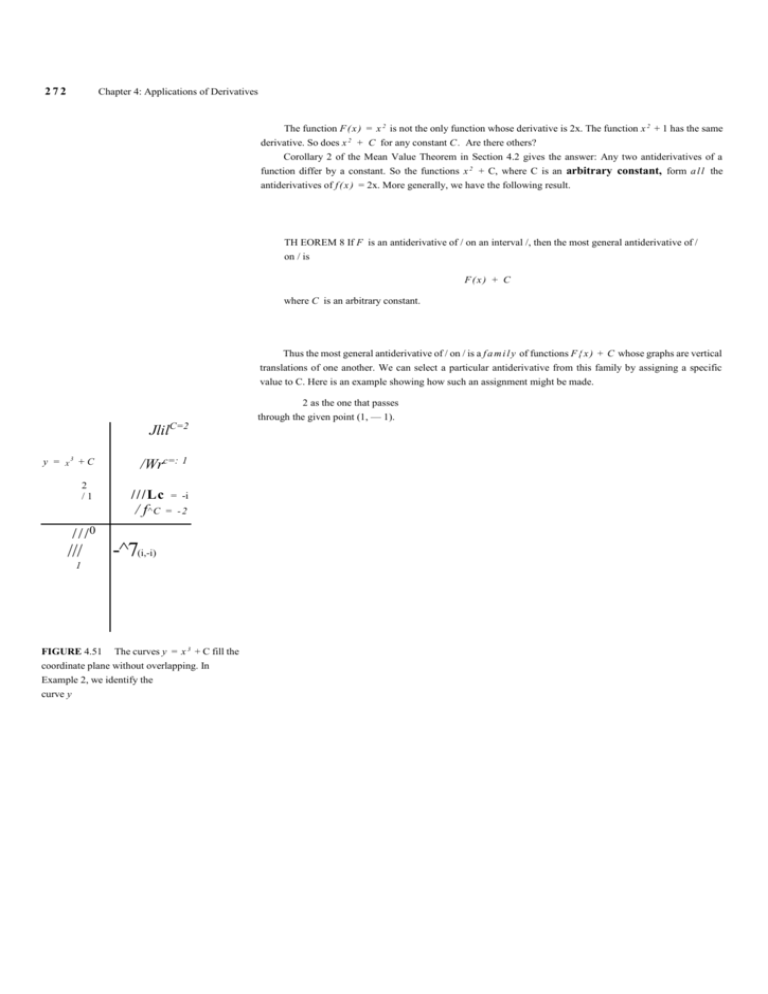
272
Chapter 4: Applications of Derivatives
The function F ( x ) = x 2 is not the only function whose derivative is 2x. The function x 2 + 1 has the same
derivative. So does x 2 + C for any constant C . Are there others?
Corollary 2 of the Mean Value Theorem in Section 4.2 gives the answer: Any two antiderivatives of a
function differ by a constant. So the functions x 2 + C, where C is an arbitrary constant, form a l l the
antiderivatives of f ( x ) = 2x. More generally, we have the following result.
TH EOREM 8 If F is an antiderivative of / on an interval /, then the most general antiderivative of /
on / is
F(x) + C
where C is an arbitrary constant.
Thus the most general antiderivative of / on / is a f a m i l y of functions F { x ) + C whose graphs are vertical
translations of one another. We can select a particular antiderivative from this family by assigning a specific
value to C. Here is an example showing how such an assignment might be made.
2 as the one that passes
through the given point (1, — 1).
JlilC=2
y =
X
3
+C
2
/1
/Wrc=: 1
///Lc
= -i
/ f^ C
= -2
/// 0
-^7(i,-i)
///
1
FIGURE 4.51 The curves y = x 3 + C fill the
coordinate plane without overlapping. In
Example 2, we identify the
curve y
value for C. Substituting x = 1 into F ( x ) = x 3 + C gives
EXAMPLE 2
Find an
F(l) = (l)3 + C = 1 + C.
antiderivative of f ( x ) = 3x2 that
Since F ( l ) = — 1, solving 1 + C = — 1 for C gives C = —2. So
satisfies F ( 1) = — 1. Solution
Since the derivative of x 3 is 3x2,
F(x) = x3 - 2
is the antiderivative satisfying F ( 1) = — 1. Notice that this assignment for C selects the particular curve from the
family of curves y = x 3 + C that passes through the point (1,—1) in the plane (Figure 4.51). ■
the general antiderivative
F(x) = x3 + C
gives all the antiderivatives of f ( x ) . The
condition F(l) = -1 determines a specific
By working backward from assorted differentiation rules, we can derive formulas and rules for
antiderivatives. In each case there is an arbitrary constant C in the general expression representing all
antiderivatives of a given function. Table 4.2 gives antiderivative formulas for a number of important functions.
The rules in Table 4.2 are easily verified by differentiating the general antiderivative formula to obtain the
function to its left. For example, the derivative of (tan k x ) / k + C is sec2 he, whatever the value of the constants
C or k ^ 0, and this establishes Formula 4 for the most general antiderivative of sec 2 k x .
EXAMPLE 3
(a)
5
f(x) = x
(d) i ( x )
cos
Find the general antiderivative of each of the following functions. 1
(c) h ( x ) = sin2x (f)
(b) g ( x ) =
(e) j ( x ) = e
3x
k(x) = 2X
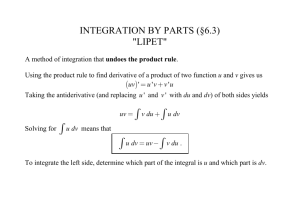
![Antiderivatives [7.5]](http://s2.studylib.net/store/data/009839726_1-71c8c3c8e7789734542b65fee1d9e6d4-300x300.png)
